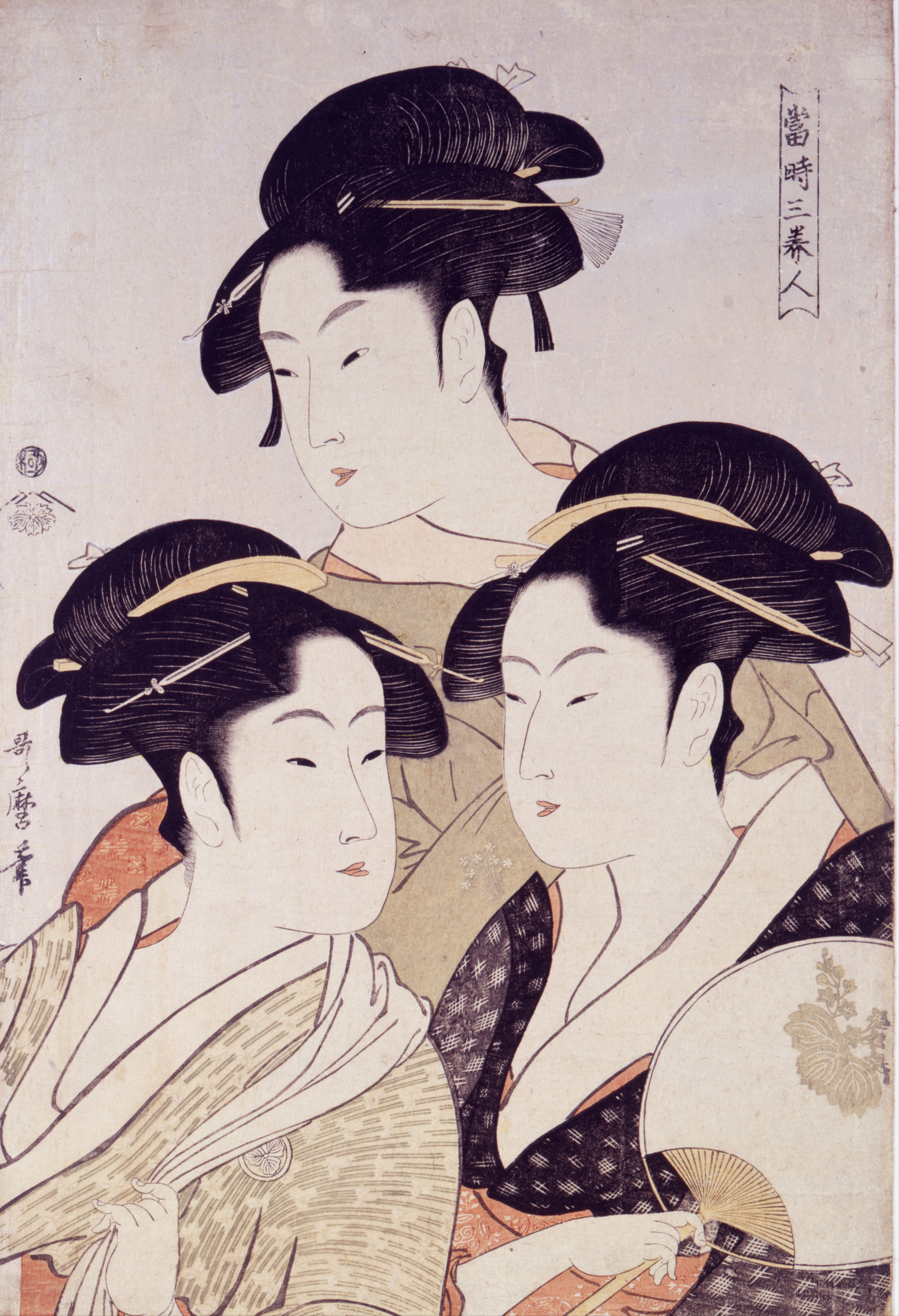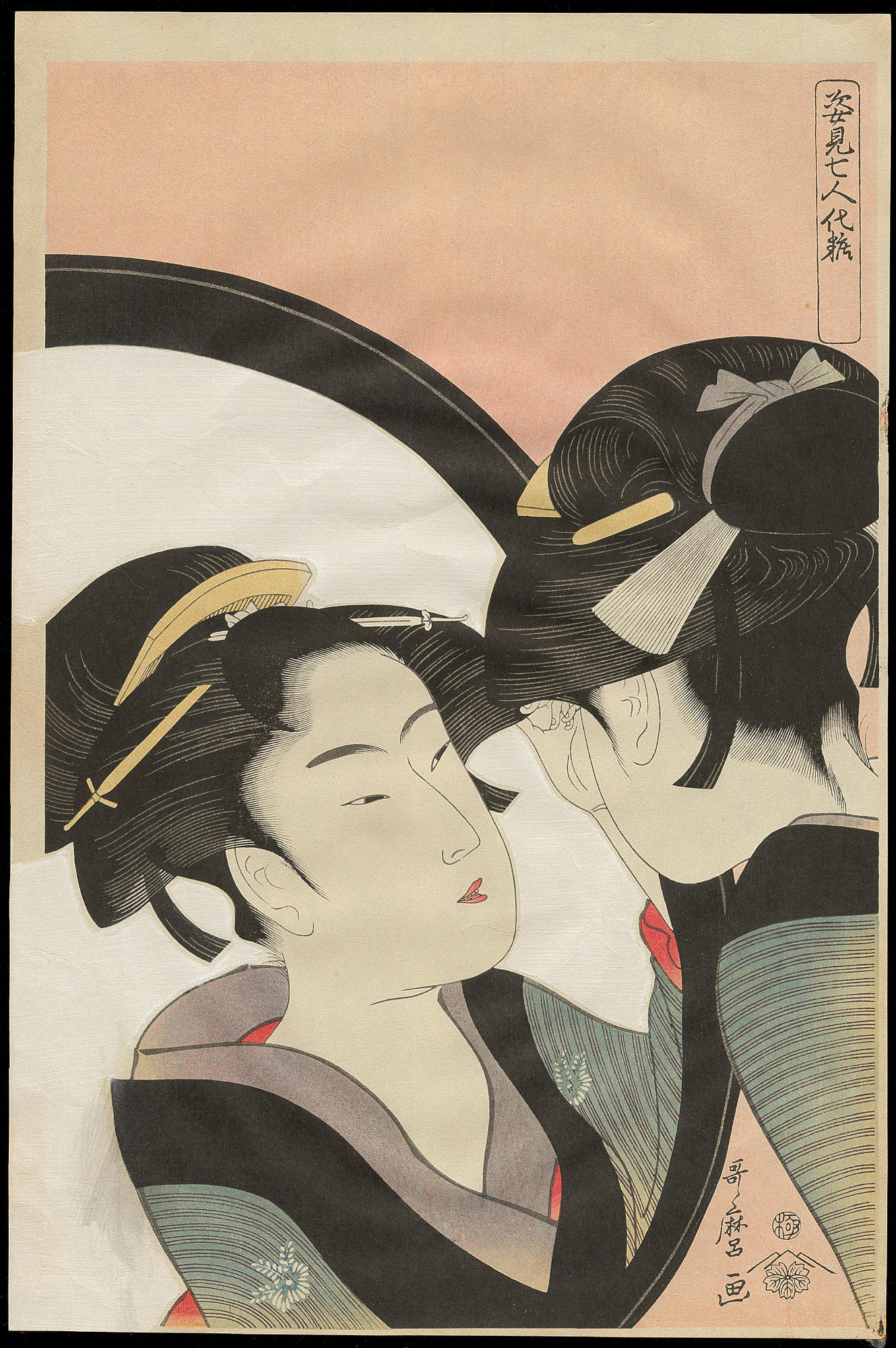The three famous Edo (Tokyo) women depicted in this woodblock print, all renowned for their striking beauty, can be identified by the crests found on their kimono or by the fan one of them holds in her hand. Naniwaya Okita, the young woman on the right, was a waitress at the Naniwaya teahouse and can be identified with that establishment by the flowering paulownia tree (kiri) crest on her fan. Next to her on the left is Takashima Ohisa, the daughter of a rice-cake shop owner, who has a triple oak leaf (mitsu-gashiwa) crest on her kimono; at the top and center is the professional entertainer (geisha) Tomimoto Toyohina, with a primula flower (sakuraso) crest on her kimono sleeve. One of the most celebrated and successful Japanese woodblock print artists, Kitagawa Utamaro's interest in physiognomy—the study of an individual's facial features as an indication of their character—helped lead to his skill at subtly altering the features of each face to create a sense of portraiture and individuality, such as the position and spacing of the eyes, the shape of the nose, and the placement of the ears. At the same time he retained a stylized, ideal beauty characterized by oblong faces and small eyes and mouths. Three Beauties demonstrates three new developments in Japanese printmaking that Utamaro helped make popular during the Edo period: the use of the so-called "big head" composition (okubi-e), which provides a close-up of each subject; the pyramidal formation of the figures; and the use of a sparkling mica-dust background (kirazuri) that sets off the soft matte tones of the faces. This print is one of at least three known states (versions with some variation of detail) of this design and includes a title cartouche in the upper right corner.




Three Beauties of the Present Day
color woodblock print with mica dust • 262 x 387 mm
 Kitagawa Utamaro
Kitagawa Utamaro